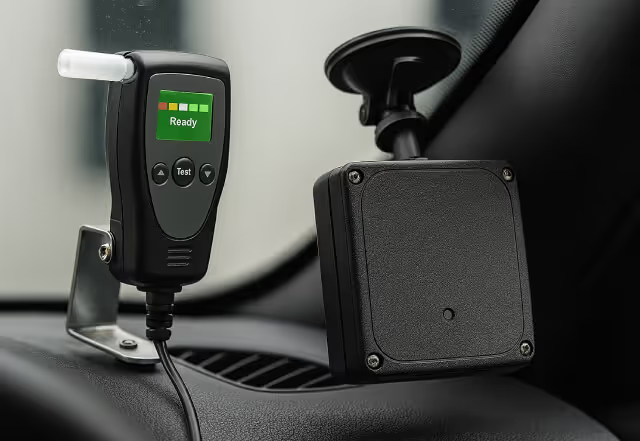Integrating ADAS into Driving School Curricula: Preparing Drivers for Modern Roads
Advanced Driver Assistance Systems (ADAS) are going to be the future of driving. And we can’t prevent that from happening. At all. For driving schools, integrating these technologies into their teaching is necessary from an early stage to ensure their students are equipped to navigate this upcoming way of driving.
The automotive industry has not been sitting still. ADAS has been growing daily and has become part of everyday driving for a lot of people. From automatic emergency braking when needed, to keeping the car in check in the lanes, these systems are designed to enhance the safety and performance of drivers on the road. Hence, it’s important for new drivers to understand both the capabilities, but also limitations, of ADAS. Just to be able to use them effectively, and also to know what they can not do.
Read on to see how you as a driving school can integrate ADAS into your curriculum to better prepare your pupils for the future of driving. Cause it’s coming. And it’s coming fast!
Teaching the Limitations of ADAS
While ADAS has the potential to significantly reduce accidents and improve driver confidence, it’s important for pupils to recognize that these systems have of course some limitations. ADAS is more of a support tool, not a replacement for an attentive driver. The instructors must stress the following points:
- ADAS Systems Are Not Foolproof: Conditions like heavy rain, snow, or poorly maintained roads can affect the performance of ADAS. For example, lane-keeping assist might struggle with faded lane markings, and automatic emergency braking may not detect objects in adverse weather.
- Human Oversight Is Essential: Drivers must remain engaged, keeping hands on the wheel and eyes on the road, even when ADAS is active.
- Over-Reliance Can Be Dangerous: Drivers who trust ADAS more than they should are at greater risk of becoming disengaged, leading to potentially hazardous situations.
By teaching pupils about these limitations, driving schools can promote safer driving habits and reduce the risk of accidents.
Introducing Simulations for Real-World Scenarios
One of the most effective ways to teach ADAS functionality is through driving simulators. These simulators, equipped with ADAS features, allow students to experience real-world applications in a safe and controlled environment.
Benefits of Simulation Training:
- Safe Learning Environment: Learners can encounter potentially risky situations, such as sudden obstacles or inclement weather, without actual danger.
- Hands-On Experience: Students can interact with systems like adaptive cruise control, parking assistance, and automatic emergency braking, gaining a deeper understanding of how they work.
- Immediate Feedback: Simulators provide instant feedback on performance, helping learners understand how and when to rely on ADAS.
By using simulations, instructors can reinforce both the capabilities and limitations of these technologies, ensuring students feel confident behind the wheel of an ADAS-equipped vehicle.
Balancing Traditional Skills and ADAS Education
To create a well-rounded driving education program, driving schools need to balance traditional skills with ADAS training. Here’s how lesson plans can be structured:
1. Traditional Driving Skills
- Mastering vehicle control (e.g., steering, braking, and acceleration).
- Hazard perception and reaction time improvement.
- Adherence to traffic laws and understanding road etiquette.
2. ADAS Education
- Detailed overviews of common ADAS features, including their purpose, operation, and limitations.
- Practical explanations of when and how to use ADAS effectively.
- The importance of maintaining driver responsibility, even when ADAS is active.
3. Practical Application
- Hands-on practice using ADAS features in simulators and real vehicles.
- Combining traditional skills with ADAS to navigate real-world scenarios, such as city driving or highway merging.
- Reinforcing how to switch between manual control and ADAS-assisted driving seamlessly.
This integrated approach ensures that learners are prepared for a wide range of driving conditions and vehicle technologies.








































